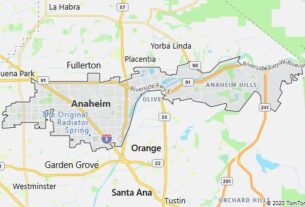Cullman County, located in the northern part of the state of Alabama, United States, is characterized by its diverse geography, rolling hills, and abundant waterways. From its scenic landscapes and forested areas to its meandering rivers and lakes, Cullman County offers a variety of geographic features that shape its climate, waterways, and natural environment. Let’s explore the geography of Cullman County in detail. Check bittranslators to learn more about the state of Alabama.
Terrain:
Cullman County’s terrain is predominantly characterized by rolling hills, fertile valleys, and forested areas. The county is situated within the Appalachian Plateau region of Alabama, known for its rugged topography and scenic beauty.
The terrain is marked by ridges and valleys, with elevations ranging from approximately 500 feet above sea level in the valleys to over 1,500 feet in the highest peaks of the surrounding hills. The county’s hillsides are covered with hardwood forests, including oak, hickory, maple, and pine trees, while its valleys are home to rich soils and productive farmland.
In addition to hills and valleys, Cullman County also features several prominent geological features, including the Mulberry Fork of the Black Warrior River, which flows through the central part of the county, and the Duck River, which flows through the eastern part of the county. These rivers provide important habitats for wildlife and recreational opportunities for residents and visitors alike.
Climate:
Cullman County experiences a humid subtropical climate, characterized by hot, humid summers and mild, relatively wet winters. The region’s climate is influenced by its location in the southeastern United States and its proximity to the Gulf of Mexico.
Summers in Cullman County are typically hot and humid, with daytime temperatures averaging in the 80s and 90s Fahrenheit (around 27-37°C) and high humidity levels. Thunderstorms are common during the summer months, bringing sporadic rainfall and gusty winds.
Winters in Cullman County are mild and relatively wet, with daytime temperatures averaging in the 40s and 50s Fahrenheit (around 4-10°C) and nighttime temperatures often dropping below freezing. Snowfall is rare but not unheard of during the winter months, with occasional winter storms bringing light accumulations of snow and ice.
Spring and fall are transitional seasons marked by fluctuating temperatures and variable weather patterns. Springtime brings blooming flowers and warming temperatures, while fall is characterized by cooler temperatures and changing foliage colors.
Rivers and Waterways:
Cullman County is intersected by several rivers, streams, and creeks, which play a vital role in shaping the region’s geography and providing important water resources for wildlife habitat, agriculture, and recreation. The most significant river in the county is the Mulberry Fork of the Black Warrior River, which flows from its headwaters in the Appalachian Mountains to the Tennessee River, traversing the central part of the county.
Other notable waterways in Cullman County include the Duck River, the Sipsey Fork of the Black Warrior River, and several smaller tributaries and creeks. These rivers and streams provide important habitats for fish, waterfowl, and other aquatic species, as well as opportunities for fishing, boating, kayaking, and canoeing.
The county is also home to several lakes and reservoirs, including Smith Lake, which is one of the largest reservoirs in Alabama. Smith Lake provides additional opportunities for water-based recreation, including swimming, sailing, and fishing. These bodies of water are important for flood control, irrigation, and wildlife habitat.
Flora and Fauna:
The diverse geography of Cullman County supports a wide variety of plant and animal species, many of which are adapted to the region’s subtropical climate and forested landscapes. The county’s forests are dominated by hardwood trees, including oak, hickory, maple, and pine, as well as shrubs such as dogwood, redbud, and mountain laurel.
The county’s hillsides and valleys provide important habitat for wildlife species such as deer, turkey, squirrel, and rabbit, as well as birds of prey such as hawks, owls, and eagles. The rivers, streams, and lakes of Cullman County support diverse aquatic ecosystems, including fish species such as bass, catfish, crappie, and trout, as well as amphibians such as frogs, toads, and salamanders.
Human Impact:
Human activity has had a significant impact on the geography of Cullman County, particularly in the areas of agriculture, development, and transportation. The county’s fertile valleys and productive farmland make it an important agricultural region, with crops such as corn, soybeans, wheat, and cotton being grown in the fertile soils. The county is also home to several cattle ranches and poultry farms, which contribute to the regional economy.
Development and urbanization are also significant in Cullman County, with suburban neighborhoods, commercial centers, and industrial parks dotting the landscape. The county’s towns and communities offer a range of services and amenities, including schools, healthcare facilities, and recreational opportunities, making them attractive places to live and work.
Transportation infrastructure in Cullman County includes major highways such as Interstate 65 and U.S. Route 31, as well as several state and local roads that connect towns and communities within the county. These transportation routes facilitate the movement of goods and people and support the county’s economy and growth.
In conclusion, Cullman County’s geography, including its rolling hills, forested landscapes, and meandering rivers, makes it a unique and scenic region in the state of Alabama. From its picturesque valleys and waterways to its fertile farmland and forested hillsides, Cullman County offers a wealth of natural resources and recreational opportunities for residents and visitors alike. Despite the pressures of agriculture, development, and transportation, the county remains committed to preserving its natural beauty and promoting sustainability for future generations.


